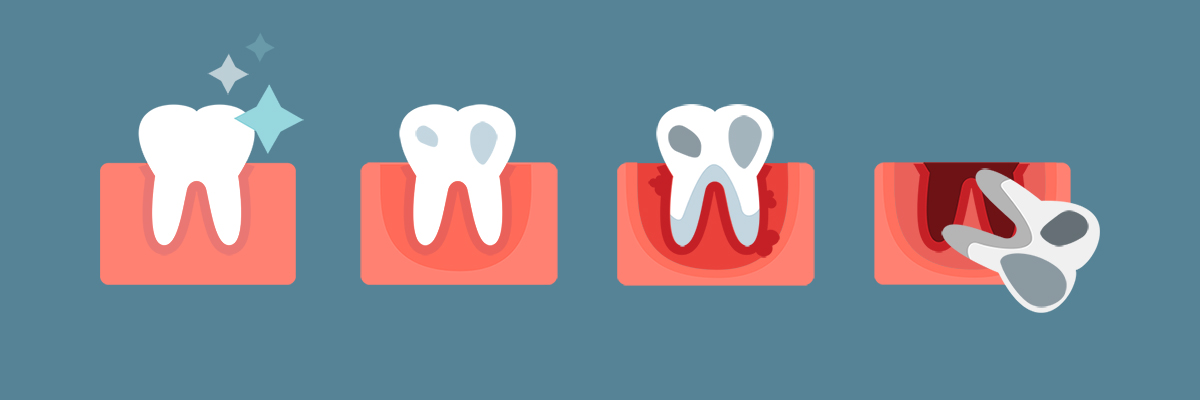Gum disease (Periodontitis and Gingivitis) are conditions where the foundations of teeth (the supporting jaw bone and adjacent gum tissue) are inflamed, eroded/lost, which can lead to tooth mobility and eventual tooth lost. The erosion of the supporting bone is caused by specific oral bacteria, and the progression of the disease is modified by a number of risk factors among such as smoking and diabetes
Management of Gum Disease
Gum disease or periodontitis, can seriously impact your overall health and well-being. It can also involve a significant cost to treat if left too long before action is taken.
The presentation of gum disease varies. Obvious signs of gum disease are:
- Bleeding gums at any time, such as when you’re brushing or flossing
- Gum shrinkage exposing parts of the teeth not usually visible
- Loose or shifting teeth
- Continuing bad breath or an ‘off’ taste in the mouth
- Swollen gums or abscesses on gums or between teeth
The treatment of periodontitis involves a course of:
- Deep cleaning
- Root planing of the tooth roots usually performed under local anaesthetic
Multiple visits are usually required to complete the initial course of treatment, as different segments of the mouth are root planned at each visit.
The deep root planing aims to remove all bacterial and hard deposits (which harbours bacteria), as these are the primary cause of the problem.
Healing and resolution often takes place, resulting in a sharp reduction of gum inflammation and the prevention of further progression. Bad breath and bleeding gums are no longer a problem.
Surgical Flap Debridement
This is an advanced level of treatment whereby a minor surgical procedure is required to clean out stubborn areas of periodontal infection.
Patients requiring surgical flap debridement often have persistent areas of non-resolving gum infection, despite having been through the initial phase of gum disease treatment.
Surgical flap debridement is performed under a local anaesthetic. The gum is lifted, revealing any remaining infected tissue and/or bacterial deposits.
The region is then cleaned out surgically and assessment is made as to whether any bone or soft tissue advanced procedures are indicated. The clean surgical site is now closed using sutures (stitches).
Guided Tissue Regeneration
This is where lost bone and soft tissues are “regenerated” via the use of the latest specialised regenerative materials. These regenerative materials are often sourced from animal based products. All materials used in our surgery are proven safe without the risk of cross-infections.
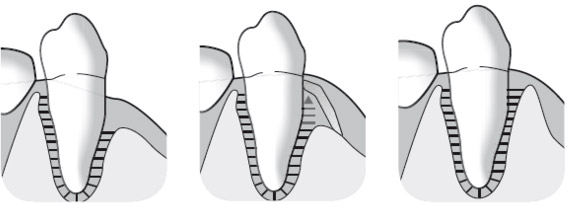
Our stocks of our regenerative materials have full Therapeutic Goods Administration approval.
Not all situations are suitable for regenerative procedures and assessment on a case by case basis is vital in determining the suitability of the regenerative techniques.
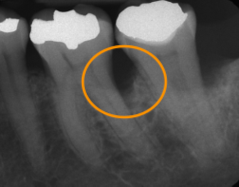
Before Tissue Regeneration
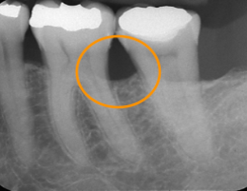
After Tissue Regeneration
Crown Lengthening
Crown lengthening is usually performed to improve the health of the gum tissue, prepare the mouth for a procedure, or correct a “gummy smile”. A “gummy smile” is used to describe an instance where teeth are covered with excess gum tissue resulting in short teeth and a less than aesthetically-pleasing smile.
This minor surgical procedure involves re-shaping or re-contouring the gum tissue and bone around the tooth in question. Crown lengthening can be performed on a single tooth, many teeth, or the entire gum line. The aim is to achieve one or both of the following:
- A more harmonious tooth-size/gum contour within “smile zone”
- Improve the amount of tooth structure so that a crown can be placed successfully
The procedure is performed under local anesthetic and involves a series of small incisions around the tissue to separate the gums from the teeth.
Even if only one tooth requires the procedure, it will probably be necessary to adjust the surrounding teeth to enable a more even reshaping. In some cases, extraction of a small amount of bone will be necessary as well.
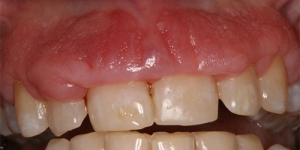
Before Crown Lengthening
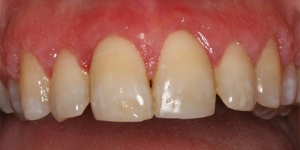
After Crown Lengthening
Gum Grafting
This is a specialised regenerative procedure to restore lost soft gum tissues in a specific localised region of the mouth. A “graft” is taken from either the roof of the mouth, or purchased from a bio-material companies. The material is then placed carefully with fine stitches, into the gum defect site. This is always done under local anaesthesia.
Assessment on a case by case basis is vital in determining the suitability of this regenerative technique.
Following the procedure, localised bruising and swelling is minimal but may occur. A sheet of post-operative instructions is provided strict to help minimise disruption to the surgical area during the initial healing phase. It is often advised that contact sports or swimming activities are avoided for some weeks following the procedure.
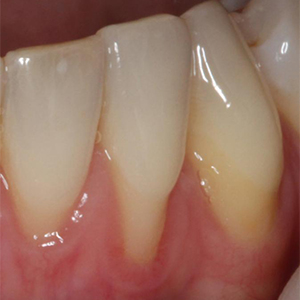
Before Grafting
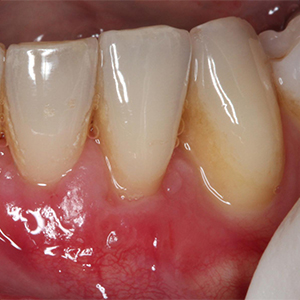
After Grafting
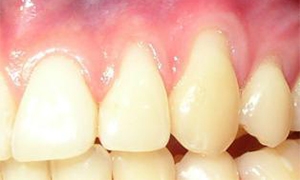
Before Grafting
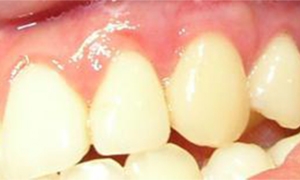
After Grafting
Extractions
 Patients are referred in to see us because there are scenarios where teeth extractions are not easy and are not straight forward.
Patients are referred in to see us because there are scenarios where teeth extractions are not easy and are not straight forward.
This is often due to the presence of infections, tooth fractures or difficult anatomy of the involved region. A surgical approach to tooth extraction is indicated in such scenarios. The surgical extraction is performed under a local anaesthetic.
Please note that we do not manage wisdom teeth extractions, which can require a general anaesthetic session. These cases are generally on-referred to a Maxillofacial surgeon.

